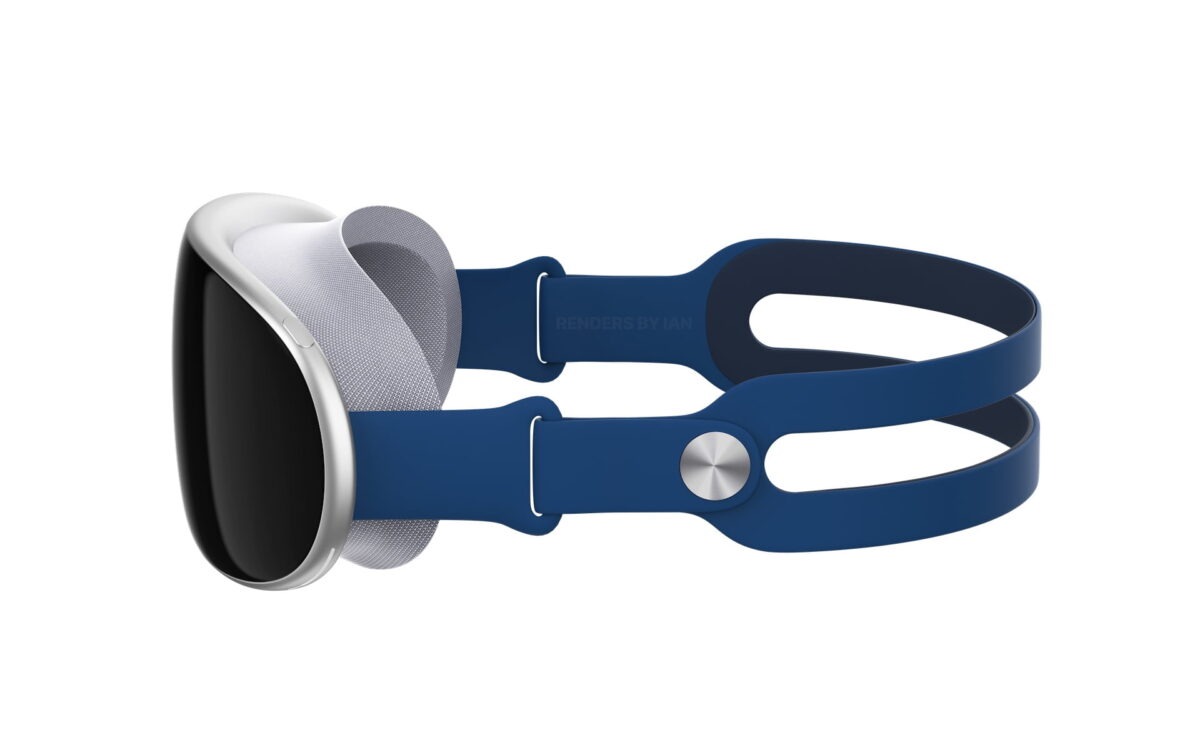Apple VR headset: Patent describes solution for an old VR problem

An ideal audio solution for VR glasses doesn't exist. A patent hints at how Apple could solve the problem.
Putting on VR goggles and launching into virtual reality is relatively awkward. Especially when you also have to connect headphones. In the worst case, the shells press on the ears, generate heat, and isolate so much that you can no longer hear anything from your surroundings.
For these reasons, VR goggles like the Meta Quest 2 rely on integrated speakers. They are sufficient in most cases, but Beat Saber and its ilk do not come off well with them.
Valve developed an interesting solution for the Valve Index PC VR glasses: special speakers that hang in front of the ears without touching them and offer excellent audio quality. The problem here is that the speakers are comparatively expensive to manufacture and stick out from the headset, which makes the device more fragile and less mobile.
Bluetooth headphones: advantages and disadvantages
Another possible audio solution is Bluetooth-based wireless headphones and earbuds. They are straightforward to use, provide good audio quality when you need it, and can let through or block out environmental noise (depending on the headphones). But this technology also has a drawback: excessive latency.
Slower VR games can be played well with it, but the delay is noticeable in beat sabers and shooters and clouds the gaming fun. This also applies to the AirPods Pro, which is otherwise well suited as wireless VR earphones. Basic limitations of the Bluetooth technology are to blame for the high latency.
Apple patent describes a new wireless audio solution
A recently granted Apple patent describes a solution to the latency issue. According to this, the company could rely on wireless audio transmission via optical signals for future Earbuds.
This only works over very short distances and when there is visual contact between the transmitter and receiver. If the optical signal is interrupted or disturbed, the earbuds automatically switch to the Bluetooth wireless connection.
A patent drawing shows VR or AR glasses as a potential transmitter. If Apple does indeed launch VR glasses, and many rumors are suggesting that it will, the company should be interested in integrating them into the existing device ecosystem. This includes the best possible user experience with the AirPods.

Apple's patent describes an optical connection between a transmitter (a VR or AR headset) and receiver (wireless Earbuds). | Image: USPTO
In a recent interview with What Hi-Fi, Apple's head of acoustics Gary Geaves talked about the limitations of Bluetooth and said that the company would like to see greater bandwidth and lower latency for audio transmission. Especially when used with 3D audio, latency can cause nausea, Geaves said.
"So we have to concentrate very hard on squeezing the most that we can out of the Bluetooth technology, and there are a number of tricks we can play to maximize or get around some of the limits of Bluetooth. But it’s fair to say that we would like more bandwidth and… I’ll stop right there. We would like more bandwidth," Geaves said.
Read more about Apple AR and VR:
- Virtual Reality: Why Meta need not fear Apple
- Apple AR/VR glasses have been delayed again - report
- Apple vs. Meta: Apple doesn't like the Metaverse
Note: Links to online stores in articles can be so-called affiliate links. If you buy through this link, MIXED receives a commission from the provider. For you the price does not change.